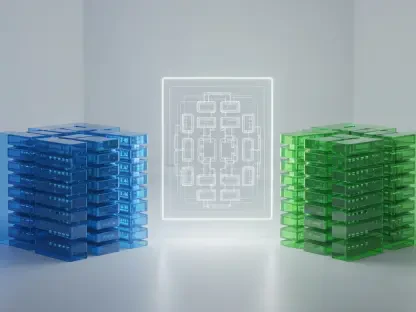The agricultural landscape is undergoing a transformative phase with the introduction of advanced technologies, known collectively as agtech, which promise to augment farming practices. Despite these ambitious goals, the surge in technology raises questions about its accessibility and usability for farmers. As autonomous drones, AI-driven systems, and precision tools become more prevalent, many farmers perceive these innovations as overwhelming rather than enhancing. This tension highlights the gap between high-tech marketing and the practical needs of everyday agriculture. By examining past agricultural advancements and drawing lessons from them, it becomes evident that the current wave of technological tools must focus on increasing productivity without complicating daily operations.
The Practical Needs of Everyday Farmers
Agtech’s futuristic representation often emphasizes sophisticated instruments like data-driven crop monitoring and automated machinery. While these tools are theoretically impressive, they may feel alienating to farmers who require straightforward, effective solutions. Historically, innovations like tractors initially faced resistance due to skepticism and unfamiliarity. It was only after farmers recognized their value in enhancing efficiency that these devices were widely adopted. This journey from skepticism to acceptance is a key lesson for current agtech developers. Farmers continue to face barriers to adoption, such as complexity, cost, and a sense of losing control over their operations. Many express concerns that the time and effort invested in learning new systems could detract from urgent daily responsibilities.
The disconnect between agtech’s sophisticated marketing and daily farming realities contributes to the perception that these technologies are more suited for tech-savvy engineers than traditional farmers. For technology to be genuinely impactful, it ought to be reimagined as an intuitive part of a farmer’s existing toolkit. In this context, drones and robotics don’t necessitate revolutionizing agriculture but should function as accessible tools that improve efficiency. This means simpler interfaces, more reliable performance, and minimal maintenance requirements. As developers strive to integrate their solutions into the agricultural routine, they must prioritize tools that can seamlessly alleviate the challenges farmers face without occupying significant mental resources or requiring extensive training.
The Importance of Empathy in Agtech Development
Empathy plays a crucial role in the development and implementation of effective agtech solutions. Understanding and addressing the farmer’s perspective is vital for creating tools that genuinely add value. This demands a reorientation from showcasing technological prowess to focusing on practical, user-friendly designs. Developers should emphasize offering clear, direct solutions to common agricultural issues, ensuring seamless integration into current practices. Meeting this standard requires not just technical innovation but also an intuitive grasp of the farmer’s routine, enabling the technology to become an unintrusive, effective ally in daily tasks.
Farmers’ renowned problem-solving abilities deserve tools that complement their experience without demanding drastic changes in workflow or lifestyle. Agtech should strengthen existing processes by simplifying tasks, improving accuracy, and allowing farmers to leverage their expertise in more efficient ways. The failure to consider these aspects in design and deployment can lead to skepticism and resistance, rather than acceptance and enthusiasm. A successful agtech tool should thus emerge as a natural extension of the farmer’s abilities—introducing meaningful improvements without disrupting established norms. This approach positions technology not as a foreign intruder but as a valuable partner in the quest for enhanced productivity and sustainability.
Building Trust Through Demonstrated Value
Building trust with farmers involves demonstrating the concrete benefits that agtech tools offer while ensuring compatibility with current farming practices. This is where the true potential of agtech becomes evident, not as a futuristic vision, but as an intelligent addition to the farmer’s toolkit. The emphasis should be on creating robust, practical solutions that address specific challenges and facilitate a smooth transition from traditional to modern methodologies. By actively listening to farmers’ needs and concerns, developers can better align their innovations with a farmer’s reality, fostering a collaborative environment where technology acts as a supportive resource rather than a disruptive change.
In an industry where experience and tradition are highly valued, earning trust involves showing that technology can reliably deliver real-world improvements. By focusing on results over rhetoric and ensuring user-friendly interfaces, agtech can empower farmers to integrate modern tools without overwhelming their capacity. This involves offering trial periods, straightforward demonstrations of effectiveness, and ongoing support to ease the adoption process. As these technologies prove their worth, they can gradually become indispensable components of modern agriculture, valued for their practicality rather than their novelty.
Streamlining Technology for Greater Impact
The agricultural sector is undergoing a significant transformation due to the integration of advanced technologies, commonly referred to as agtech. These innovations promise to revolutionize farming practices by enhancing efficiency and productivity. However, this rapid advancement raises concerns about its availability and ease of use for farmers. With the increasing prominence of autonomous drones, AI-driven systems, and precision agriculture tools, these innovations can seem more daunting than helpful to many in the farming community. This situation underscores the discrepancy between high-tech solutions and the practical requirements of everyday agricultural operations. To bridge this gap, it is crucial to learn from previous agricultural advancements. These lessons point to the necessity for current technology to focus on boosting productivity while remaining user-friendly and not complicating farmers’ daily routines. In doing so, the agtech movement can truly fulfill its promise of improving the agricultural landscape without leaving farmers behind.









